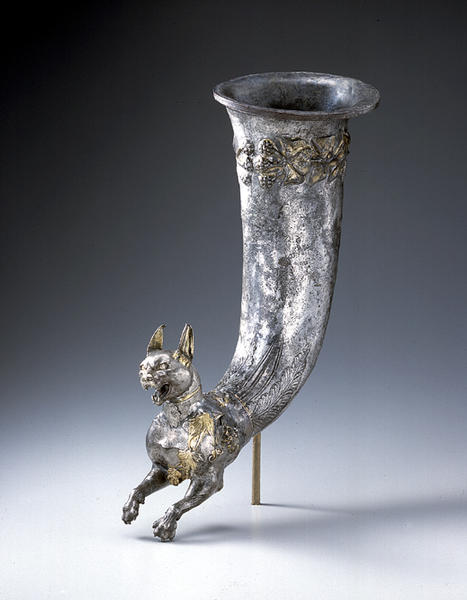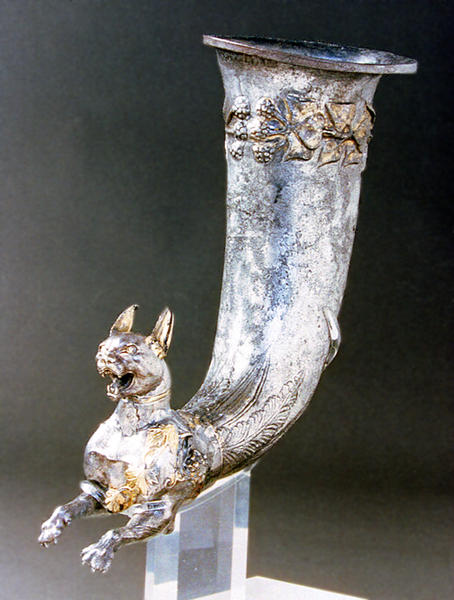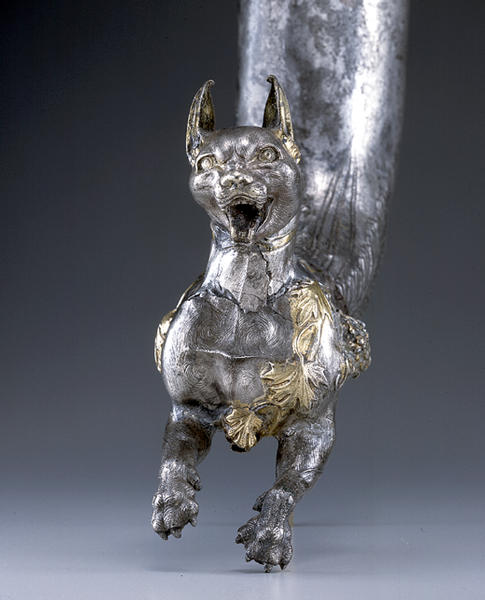Lynx Rhyton
- Parthian
- 1st century B.C.
- Gilded silver
- H-44 D-15
Catalogue Entry(Bac#029,030)
29
Lynx Rhyton
1st century B.C.
Gilded silver
L. 44.0 cm, Mouth dia. 15.0 cm
30
Rhyton with the Protome of a Desert
Lynx Catching a Fowl
Late 2nd‐1st century B.C.
Gilded silver
L. 41.4 cm, Mouth dia. 15.2-15.4 cm
The silver rhyton at no. 30 shows the forequarters of a desert lynx catching a fowl in its paws, while the chest of the bird forms the spout. The entire figure of the bird is gilded and contrasts clearly with the cat's form, while the cat's eyes and the insides of its ears are also gilded. The long ears are pointed at their tips and curve in slightly as part of the expression of this powerful cat. There are several examples of Hellenistic jewelry with similar cat motifs from around the time of Christ. This cat is wearing a gilded collar, and this probably indicates that such animals were kept for hunting purposes during this period. The desert lynx is a Dionysian beast, and it is frequently shown alongside leopards. There are also several similar examples of rhyta with attached animal forequarters, and as can be seen in cat. No. 29, the lynx's body is decorated with vine and grape motifs, clearly indicating a deep relationship with the rites of Dionysus. And we know that the mystery of Dionysus included ritual vessels featuring this kind of hunting cat, such as a leopard or lynx. Similar examples in the J. Paul Getty Museum and the Sackler Gallery have the same kind of hair depiction on the animals' body, and a spiral motif on their shoulders. The curling hair motif on the lynxes on cat. Nos. 29 and 30 are not the same kind of motif. The lynx violently plunging and capturing the bird in such amazingly life-like form that we can almost feel the bird's surprise. A Greek craftsman with unparalleled skill created this motif which, in fact, originated in west Asia.
Rhyton with the Protome of a Desert Lynx Catching a Fowl


